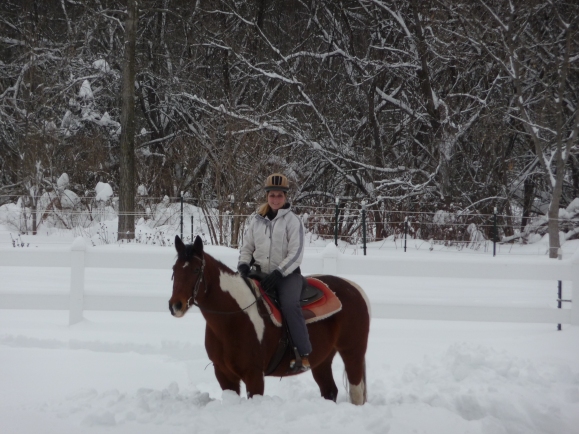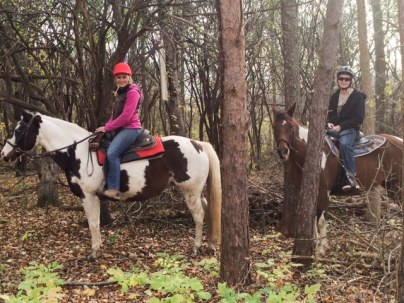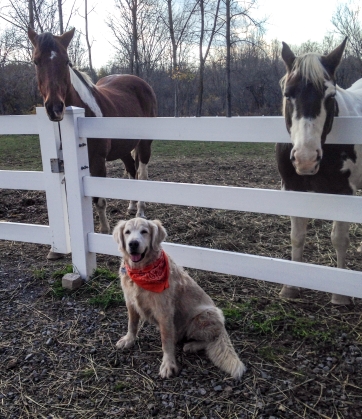This had to follow my previous article “If I were a horse, I might need a smoothie cleansing diet”. It’s only fair. Why should horse owners only be concerned about their horse’s weight and not their own weight on their horse! When I started to research this question, it is more complicated than you may think. There is also some good news and some bad news depending if you might need to lose a few pounds before riding season.

‘I think you’re overfeeding him.’
I have two super horses that I am lucky enough to share with pretty much any level rider in a controlled environment but I always consider the welfare of my horse before allowing anyone on them. Weight is usually the first thing I consider before allowing someone on my horses, especially Bailey with the the fused pastern joint.

The novice rider can be very unbalanced on a horse so I pay close attention to how my horse reacts with the rider on them. If I feel at all my horse is hurting, the ride stops. I also own two very light western saddles that I use on both my horses. They were purchased specifically for Bailey with her original high ringbone condition. She needed a regular riding program but not extra weight on her joints. Saddles can easily add an extra 30 plus pounds.

So what is too heavy a rider on a horse? There is some very simple science. Every extra pound a horse carries requires more energy. That’s pretty logical. Where the variables come into play are:
– what age is the horse?
When a horse is very young, with developing joints and bones and when a horse reaches its senior years and begins to become arthritic, it’s time to lighten the load. The overall workload of these horses needs to be lighter—in weight, time and intensity, than a fit horse in the prime of its life.
– what kind of riding and for how long?
– is the rider balanced?
A rider who is balanced in the saddle and has a good seat will be easier for the horse to carry than a rider who is sloppy in the saddle It won’t take long before a horse who must carry an unbalanced rider will develop back and soundness problems that can also lead to behavior problems. Improving your riding skills not only makes your ride more comfortable, safe and secure, your horse will also be more comfortable, sure-footed and stay sound much longer.
– the conformation of the horse.
– is the horse well-conditioned?
– what breed is it?
If you are tall, you may feel very top heavy on a shorter horse with fine bones. A solidly built horse, such as an Icelandic, or Fjiord might be more comfortable, even though it is short in relation to many other breeds like Arabians and Thoroughbreds. Anything that makes you unbalanced will make it harder for your horse to carry you. If you’re on the heavier side, consider a breed like a foundation type American Quarter Horse or a draft or draft cross or look for a horse with thicker bone. Bone is measured at mid-canon on the front leg. The higher the circumference, the sturdier the horse is.
– what condition are its feet?
– what kind of saddle is being used and does its fit properly?

‘Getting that extra weight off isn’t hard. . . keeping it off is.’

Caution! Heavy Load!
American researchers found that horses forced to carry between 25 and 30 per cent of their body weight have more physical problems related to exercise than those who carry 20 per cent or less.
Horses carrying 30 per cent body weight showed a significant increase in muscle soreness and muscle tightness scores.
They concluded in the study, entitled Evaluation of Indicators of Weight-Carrying Ability of Light Riding Horses, that, for lighter riding horses, a total weight (rider, saddle, other equipment) not in excess of 20 per cent of the horse’s body weight was quite acceptable and did not appear to stress the horse.
Interestingly, that correlates with a military rule of thumb. In its 1920 Manual of Horse Management, the US Cavalry suggested a horse should not be asked to carry more than 20 per cent of its body weight. This assumed a combined weight of rider, saddle, bridle, and other equipment.
If rider weighs 160 lbs. + the saddle, bridle and other equipment is 40 lbs. that = 200 lbs. A horse weighing 1000 pounds, could handle 200 lbs.


The bottom line should always be the welfare of your horse. So go get your saddle, and bridle, and pad, and helmet, and anything else you usually ride with and stand on a scale. That will give you a starting point. Then be honest with yourself on your riding ability. Then evaluate your horse’s age and condition and do some math. If you need to lose a few pounds, I know a great smoothie recipe book to kick start your weight loss goals.



















